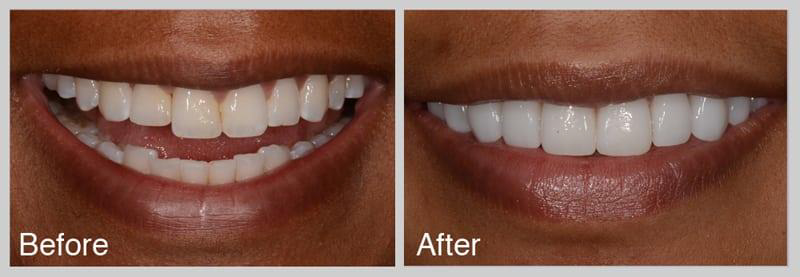Ultra-Thin vs. Traditional Porcelain Veneers: Which is Right for You?
When people want a truly stunning smile, porcelain veneers are the quintessential answer. These thin ceramic shells are applied purely for cosmetic reasons and are carefully designed to match the color and translucency of natural teeth. It’s difficult to tell the difference between them and natural teeth. Porcelain veneers cover only the front of a tooth and “hug” it around the sides a bit to provide a seamless look. At times, a veneer is applied to a single tooth that has defects, such as discolorations or chips. When they are used as part of a smile design to provide a red-carpet appearance, veneers will often be placed over several front teeth.
If you’ve been researching porcelain veneers as a method to enhance your smile, you likely have found information on both the traditional and ultra-thin varieties. It’s not always easy to notice the differences or gauge which option is best for a particular situation, so we’ll discuss both.
Traditional Porcelain Veneers
The traditional variety is fairly thin—about a one-half millimeter or about half the thickness of a dime. These porcelain veneers are ideal for a wide variety of circumstances and provide great coverage.
Ultra-Thin Veneers
In recent years, ultra-thin varieties have emerged. One popular name brand is Lumineers, although there are many brands. Dr. King uses Pearls, her own brand of ultra-thin porcelain veneers. The ultra-thin varieties are roughly half as thick as the traditional ones or similar to a contact lens, which means that less tooth structure has to be removed when they are placed. Dr. King and her team achieve amazing results with Pearls.

Certain brands are marketed as no-prep options and claim to be so thin that they can be directly adhered to a tooth without removing, or preparing, any of its structure. Pause for a moment and think about that claim. If something even as thin as a slip of paper was attached to your tooth, you would notice it, just as you might notice a piece of spinach stuck to a tooth after a meal. There is added bulk, and that feels unnatural to you. The ultra-thin varieties are the same way if no preparation is done at all, and they will sometimes look bulky too.
At the Atlanta Center for Cosmetic Dentistry, we can help you understand what option is best for the results you are looking to achieve.
Are you ready for the smile of your dreams?
“Extremely attentive with kindness, full understanding and explanation of any condition, they NEVER perform unnecessary procedures.”
“After having extensive extensive cosmetic work done more than ten years ago, I am loyal fan of this practice…”
